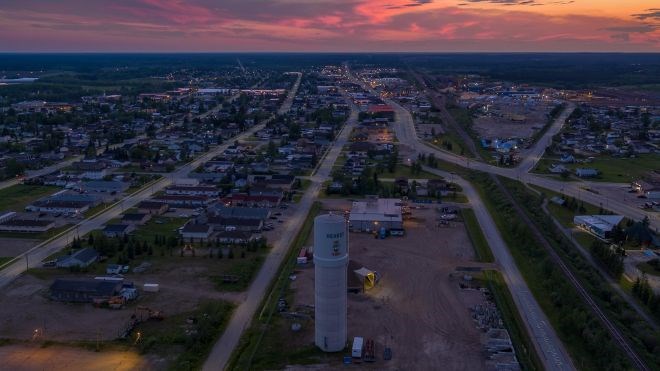The Town of Hearst has traditionally been a lumber town, but a number of new initiatives are underway to build its capacity and strengthen its economy.
Situated along Highway 11, the francophone town of 5,000 has direct access to the CN Rail line, which runs east to Montreal, west to Vancouver, and south to New Orleans. Sawmills owned by Tembec and Columbia Forest Products remain the largest employers in town.
But with changing demographics in recent years, the town recognizes the need to diversify, says Sylvie Fontaine, Hearst’s economic development officer. From 2006 to 2011, Hearst lost 9.6 per cent of its population, and the community sat up and took notice.
“Mostly it was youth 18 to 34, so that really hurt us,” says Fontaine. “But we’re seeing a lot of youth coming back and getting involved.”
Central to its new approach is a mining readiness strategy, being developed in partnership with Constance Lake First Nation. Eager to benefit from the nearby developing Zenyatta Ventures graphite project, the two communities have established a regional stakeholder committee with representatives from the communities, the mining industry, and government.
Fontaine said the goal is to capture any future investment and reduce leakage from the region.
“We want to use this to improve the prospect of investment and have a coherent and common vision with Constance Lake and Hearst, which is quite unique because Hearst and Constance Lake have different realities,” Fontaine said.
“Whatever's good for either community will be good for the region.”
Tied with new development is a need for additional accommodation, and so Hearst is undertaking a housing strategy that will identify gaps in the current housing stock and outline a plan for closing those gaps.
“We have serviced land that’s available for development, so we want to increase investment in housing,” Fontaine said. “We feel that if we have a definite plan it will help us stimulate investment in the community.”
Results of the housing strategy will be available in March 2017.
Hearst is simultaneously working to strengthen its economic base by supporting existing businesses with retention and expansion programming. Over the last year, the EDC has spearheaded a number of programs and initiatives, like Employer de Choix, which provided business owners with coaching on new skills they can bring to the workplace.
Recognizing that immigration will play a primary role in fulfilling the town’s employment needs, the Newcomer Symposium focused on making Hearst a welcoming place for newcomers. The settlement committee released an action plan to address the issue this fall.
“This is to ensure that when newcomers come to town, whether they’re from southern Ontario or from Africa, what needs to be done to ensure that they do stay,” Fontaine said.
For the fourth year, Destination Hearst was a great success, welcoming students or former young residents to a networking event that connects graduates with employers. It’s part of an effort to encourage former residents to return home for employment or to set up their own business.
With the newest initiative, Hearst is working to engage community leaders and stakeholders in becoming an entrepreneurial community. With box stores and conglomerates moving in, Fontaine said the town wants to remind entrepreneurs that Hearst is still a great place to run a small business.
“We want to reassure ourselves that this dynamism is still there,” Fontaine said. “If not, what needs to be done to ensure that the youth think of being an entrepreneur as a career choice and that they have what’s needed if they do decide to start a business.”
A forum will be held at the end of November to explore this idea further and come up with an action plan.
As a backdrop to all this activity are pristine snowmobile trails, clear lakes, and ample wildlife; whether you like cross-country skiing or hunting, or both, Hearst offers it all.
Yet Fontaine believes Hearst is so much more.
“Whoever likes fishing and hunting, this is a paradise for them; however, we do have other activities,” Fontaine said. “I think Hearst is very vibrant.”
Because the town is somewhat isolated — the closest large hub, Kapuskasing, is 92 kilometres away — Hearst has relied on self-sufficiency and creativity to blossom into a unique pocket of the North, with a country festival, comedy show, and food fair among the activities on offer.
Fontaine believes this distinctiveness is what makes Hearst such an inviting place to live, play, and do business.
“In terms of quality of life, I don’t think you can find anything better than here with all that we have to offer.”




